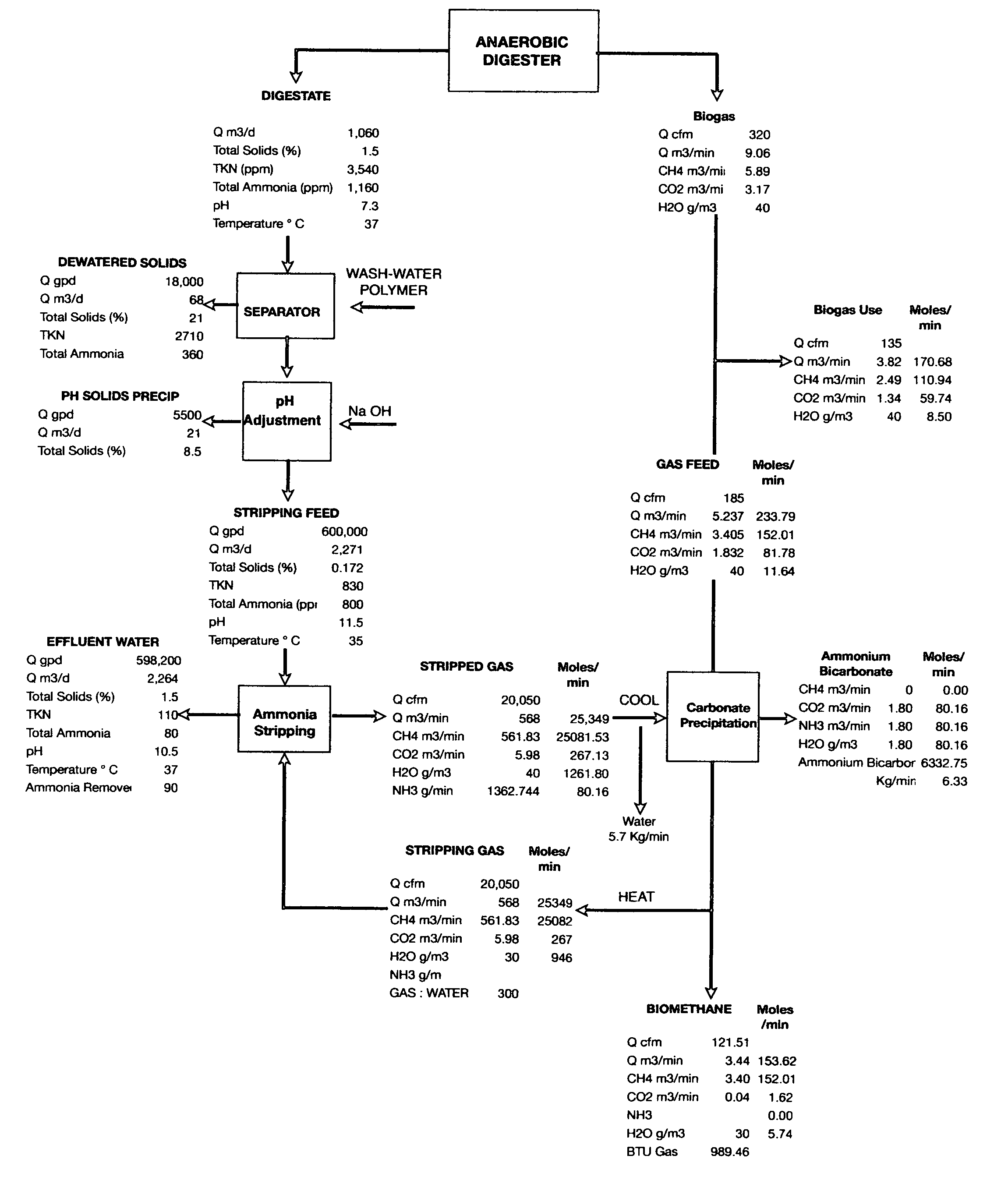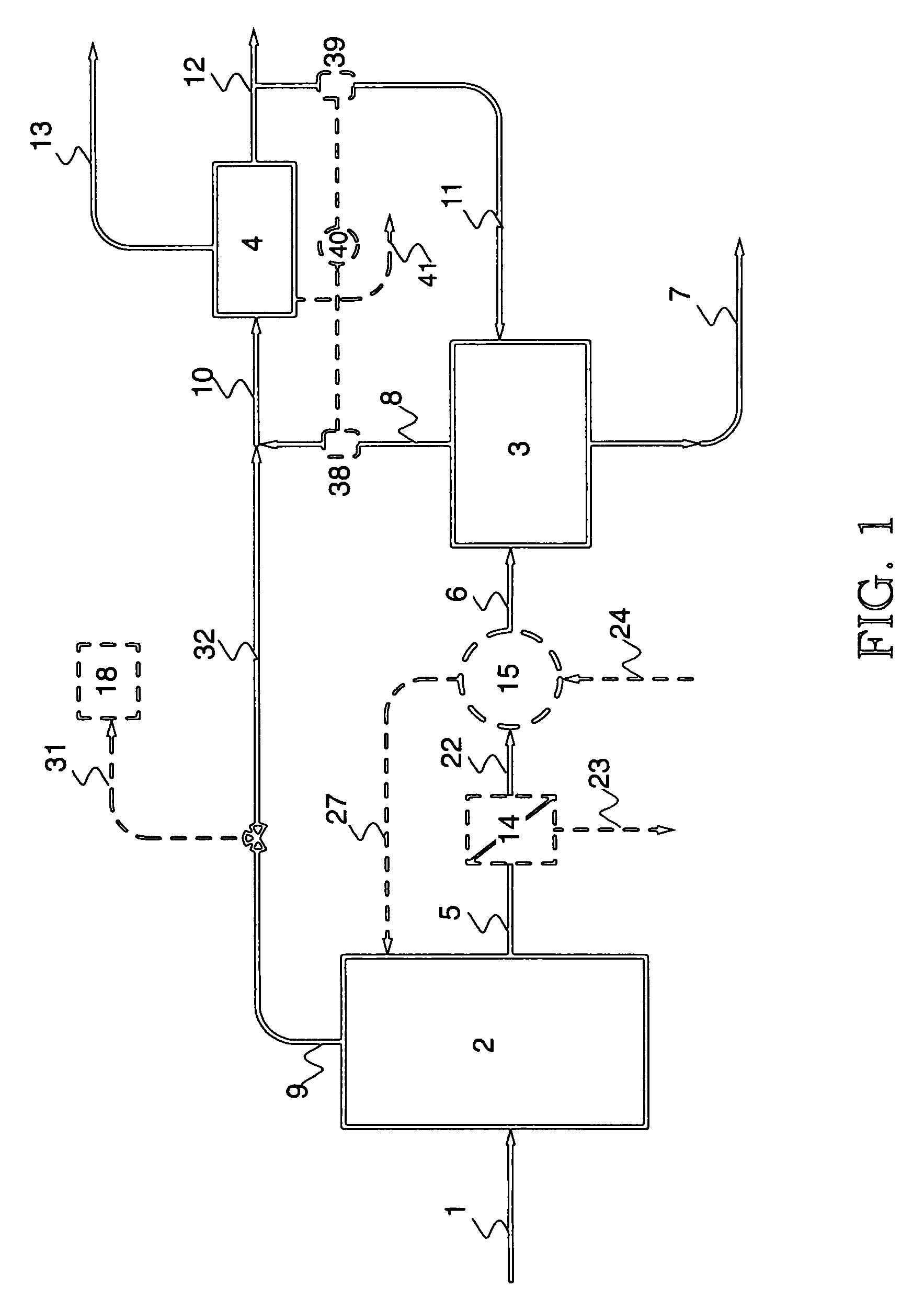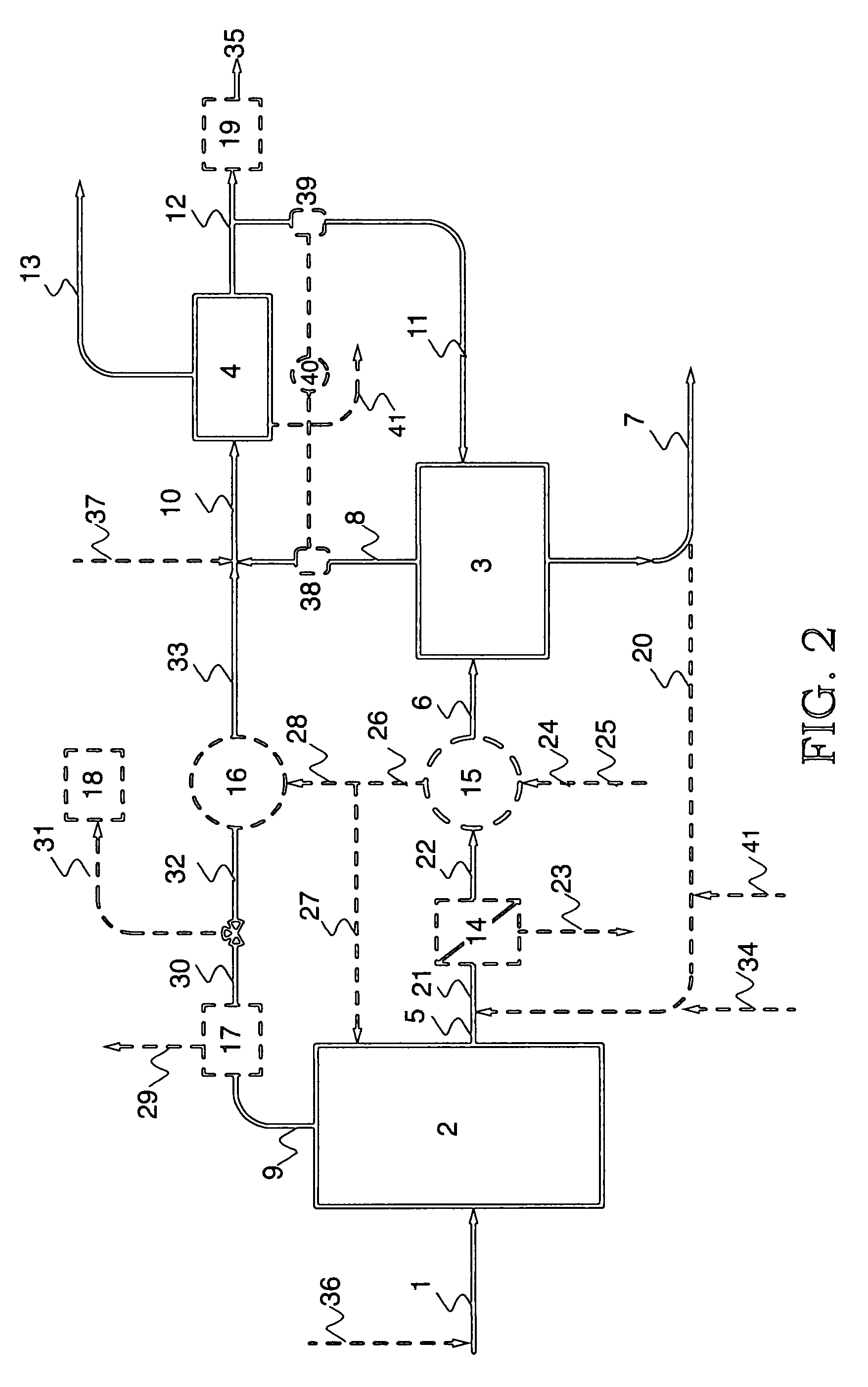Removal of ammonia from fermentation effluent and sequestration as ammonium bicarbonate and/or carbonate
a technology of ammonia bicarbonate and fermentation effluent, applied in the direction of water/sewage treatment, water/sewage treatment by degassing, separation process, etc., can solve the problems of scale formation, unforeseen ecological damage, significant health hazards, etc., and achieve low temperature and low operating cost, low operating cost, and economic low-pressure
- Summary
- Abstract
- Description
- Claims
- Application Information
AI Technical Summary
Benefits of technology
Problems solved by technology
Method used
Image
Examples
example
[0054]FIG. 3 presents an example of ammonia sequestration at a municipal anaerobic digestion facility. The anaerobic digester produces two effluent streams, biogas and digestate. The digestate was dewatered with a belt filter press that requires significant quantities of wash water and polymer. The separation process produced 68 m3 per day of 21% dry solids. The effluent from the belt filter presses was further treated with sodium hydroxide to raise the pH to 11.5 and precipitate and concentrate colloidal solid material. Twenty-one m3 per day of 8.5% precipitate was removed through the pH adjustment process. The wash water and chemical reagent deluded stripping feed was then delivered to the ammonia stripping tower. The flow rate of the stripping gas was 300 times the flow rate of the stripping feed in order to achieve a 90% removal of ammonia. The heated stripping gas contained primarily methane gas with traces of carbon dioxide. The fully saturated stripped gas from the ammonia st...
PUM
| Property | Measurement | Unit |
|---|---|---|
| temperature | aaaaa | aaaaa |
| temperature | aaaaa | aaaaa |
| temperature | aaaaa | aaaaa |
Abstract
Description
Claims
Application Information
 Login to View More
Login to View More - R&D
- Intellectual Property
- Life Sciences
- Materials
- Tech Scout
- Unparalleled Data Quality
- Higher Quality Content
- 60% Fewer Hallucinations
Browse by: Latest US Patents, China's latest patents, Technical Efficacy Thesaurus, Application Domain, Technology Topic, Popular Technical Reports.
© 2025 PatSnap. All rights reserved.Legal|Privacy policy|Modern Slavery Act Transparency Statement|Sitemap|About US| Contact US: help@patsnap.com



